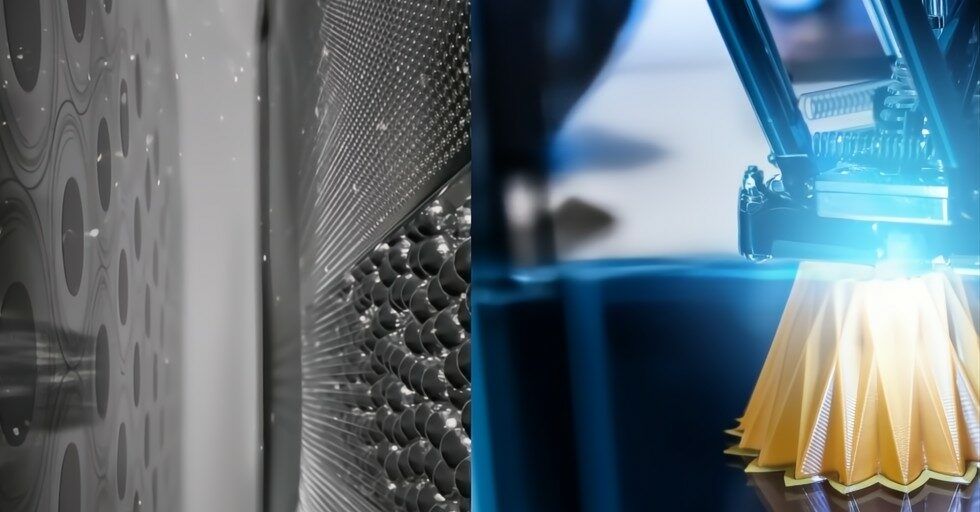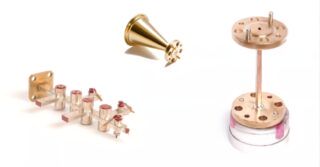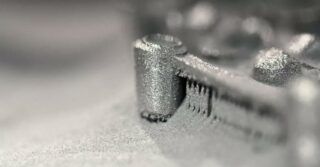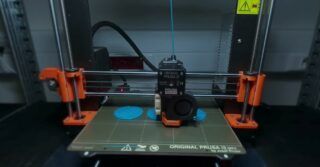In our first article on electroplating, we introduced this technology as a tool for additive manufacturing of exceptional quality. Today, we would like to highlight the difference between electroplating and another additive manufacturing method – professional 3D printing.
Both methods offer alternatives to traditional manufacturing techniques that remain unrivalled in mass production. Each method has its advantages and certain drawbacks, so they are not a one-size-fits-all solution for all manufacturing needs. However, in their respective areas of application, they address many of today’s manufacturing challenges. As these technologies develop, it will be possible to exploit their benefits more effectively in hybrid production.
Production time
Traditional manufacturing methods have a significant advantage when it comes to simple, automatically produced elements that offer fast production times. Injection moulding, for example, can produce parts in a matter of seconds. However, the scenario changes for more complex parts. If machining or other forms of processing are required, production times can increase significantly and often require manual labour. The time required to prepare the appropriate tooling and moulds, especially for complex parts, can also be extensive and labour-intensive.
3D printing has long been recognised as an alternative to traditional manufacturing. Its undeniable advantage lies in the rapid realisation of a concept. Importantly, changes can be made quickly between prints. From the design of a component to its physical creation, the process can take days or even hours, making it ideal for rapid prototyping.
Electroforming shares attributes of both of the above worlds. The galvanic growth process requires a mould, which takes time to create. However, like 3D printing, the actual production of the part can take anywhere from a few hours to a few days.
The two technologies can also complement each other. Using 3D printing to create moulds significantly reduces the time needed to produce them, while maintaining the required quality and precision. In rapid prototyping, 3D printing can be used to create the skeleton of the component, which is then finished with electroplated coatings to give the final product the desired properties.
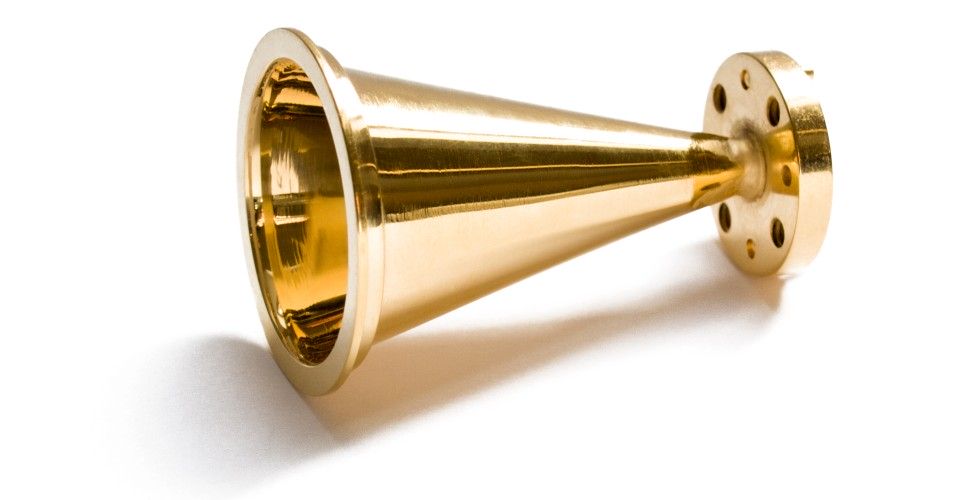
Tapered antenna made by electroforming technology
Manufacturing costs
The cost of manufacturing using standard methods depends on the complexity of the component being produced. Simple components require significant initial investment in machinery and injection moulds, but the unit cost is competitively low. However, complex products require additional machining, which means human intervention after the basic version is produced, which becomes costly in mass production.
The initial investment in 3D printing, as with traditional methods, is significant. A professional 3D printer costs from several to tens of thousands of dollars or more. However, this cost is quickly recouped as the production of individual elements does not require a team of workers for each piece – it is just the cost of the material used.
It’s worth noting that the unit price of filament is significantly higher than the materials used in traditional processes. An additional economic advantage of 3D printing is the lack of material waste in the production process (excluding support structures).
Electroplating benefits from both approaches – the initial equipment cost is in the range of a few thousand dollars, making it much cheaper than traditional methods and comparable to more affordable professional 3D printing solutions. In addition, unlike printing, electroplating requires a mould, similar to injection moulds, but the cost is much lower, ranging from one to several thousand dollars depending on the size of the element. It’s also worth noting that the life of an electroforming mould is usually much longer than that of a mould used in traditional manufacturing.
From a unit cost perspective, electroplating is in the middle of the pack. It can’t match the production costs of injection moulding, but for more complex elements, the unit cost is much lower than for elements produced by machining or 3D printing due to the significantly cheaper material, the lack of waste and the absence of manual labour.
In certain cases, hybrid manufacturing, which uses 3D printing to create the skeleton of the product and electroplating to finish it, can also be cost effective. The main advantage of this approach is that there is no need to build a mould for electroplating. However, each element produced must be machined prior to electroplating, so this solution only significantly reduces costs for single elements or very small batches.
Accuracy and repeatability
Parts produced by standard methods can have high repeatability, depending on the type. Injection moulding, which has been perfected over the years, offers good repeatability within reasonable tolerances. Of course, the complexity of the component that complicates the injection process, or the small tolerances allowed, significantly reduce this repeatability. The situation is even worse for products that cannot be manufactured using a mould.
Traditional subtractive methods such as machining or even EDM (electrical discharge machining) offer very limited possibilities in terms of accuracy, and the heterogeneous structure of the material means that repeatability is not at a high level.
The situation with professional 3D printing is similar. Despite the use of sophisticated equipment, support structures, environmental controls and other improvements, 3D printing still leaves much to be desired in terms of both accuracy and repeatability. The typical layered nature of the product, due to the point-by-point application of material, has significant consequences. With 3D printing, there is always a trade-off between jet thickness (accuracy) and the time it takes to produce the product.
The situation is not helped by the fact that precise, slow material application means that the difference between the parameters of the dried layer and the freshly applied filament causes significant durability and strength issues. An undeniable advantage of print repeatability is the reproduction of the manufactured element from the digital model, which does not degrade. It can also be more repeatable than subtractive technologies, but only in limited cases.
Electroplating is the undisputed leader in terms of accuracy and repeatability. Due to the layering mechanism, which amounts to the growth of structures at the atomic level, the accuracy and repeatability are astounding. The tolerance maintained is in the single nanometre range, regardless of the size and shape of the product. Repeatability is maintained at the level of hundreds of thousands of parts per mould.
Product parameters
Traditional methods make it possible to produce components with very good physico-chemical properties. There is no limit to the choice of materials and the number of ways in which parts can be combined. New technologies and materials are emerging every day, making it difficult to evaluate traditional methods collectively. In our activities, we adopt them as standards depending on the specific application.
Modern professional 3D printing methods have always been in a race to catch up with traditional methods. The use of a limited number of material types, which must have specific properties due to the printing process, significantly limits the application possibilities and the parameters of the final product. An additional problem is the inability to apply special technologies designed to improve a selected parameter. However, the most significant problem is the reduction in mechanical properties. The first reason for this situation is the micro- and nano-structure of the printed materials within the web.
At these two levels, there is random bonding of structural flakes and atoms, which can be easily observed under a microscope, showing random orientations and relatively large voids. The second reason is the weak mechanical bond between individual tracks, which is related to the subsequent layering of material and its integration with varying physico-chemical state parameters of the existing track. Similar product quality issues are also evident in other parameters. In other words, the development of 3D printing has only ‘patched’ some problems and has never progressed to the stage of improving quality parameters compared to traditional methods.
The situation is different with electroplating. While it’s not the answer to all requirements, there are many applications where selected parameters can significantly outperform traditional methods. This is due to the ability to design the structure very precisely at the nano level. By choosing the right working parameters and additional enhancement methods, it is possible to effectively build up atomic layers to form a coherent crystallographic lattice and minimise defects. Other methods allow the orientation of carbon allotropes and their filling with atoms of selected elements, offering remarkable properties such as exceptional strength or electrical conductivity (exceeding even that of copper) at the macro scale.
The absolute control possible with electroplating isn’t always necessary. The requirements for most products are limited, and for electrical conductivity, for example, the surface of the conductor plays a key role. By combining 3D printing and electroplating, it’s possible to create a component with the required surface that can be easily produced in the printing process.
Conclusion
So which method is best? The answer can be summed up in two words, probably every engineer’s favourite response to almost any question they’re asked: “It depends”. Each manufacturing method has its clear advantages and disadvantages and excels in different applications, scales and stages of product development and requirements.
What we are most excited about is combining the speed and flexibility of 3D printing with the quality associated with the parameter control and repeatability of electroplating. We see this as a real future in the production of various elements, offering a tailored approach that leverages the strengths of both technologies to meet specific manufacturing challenges.


